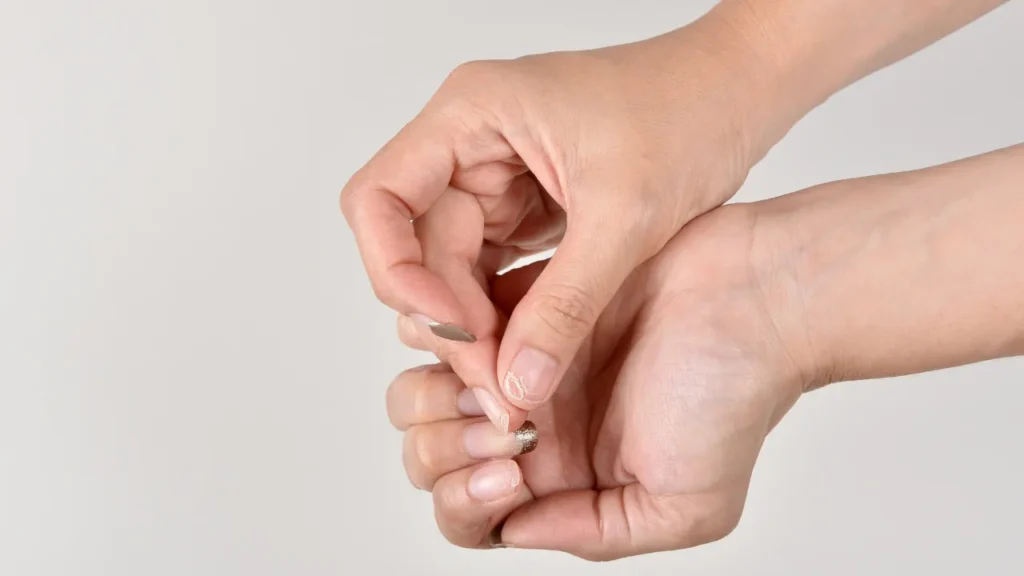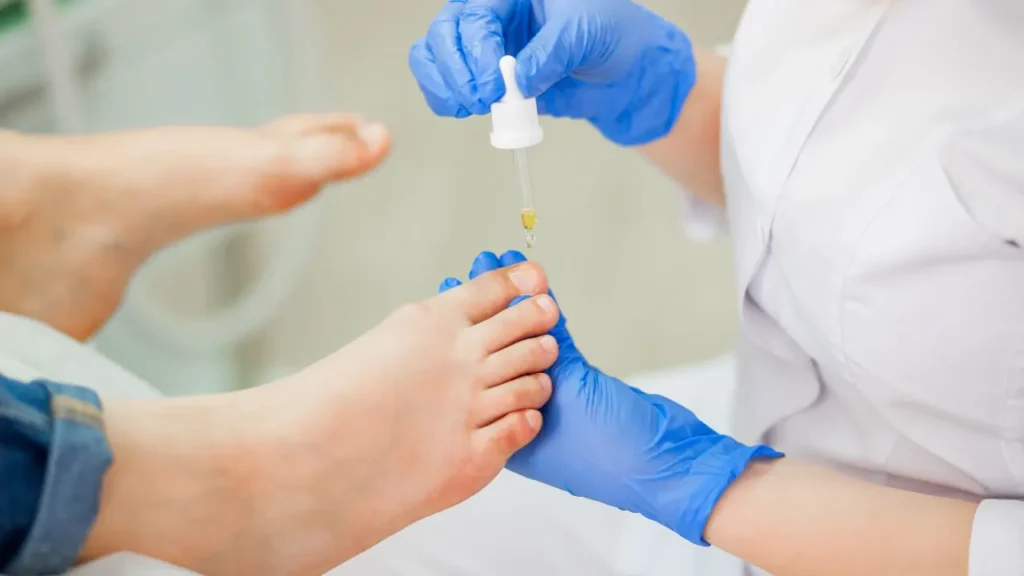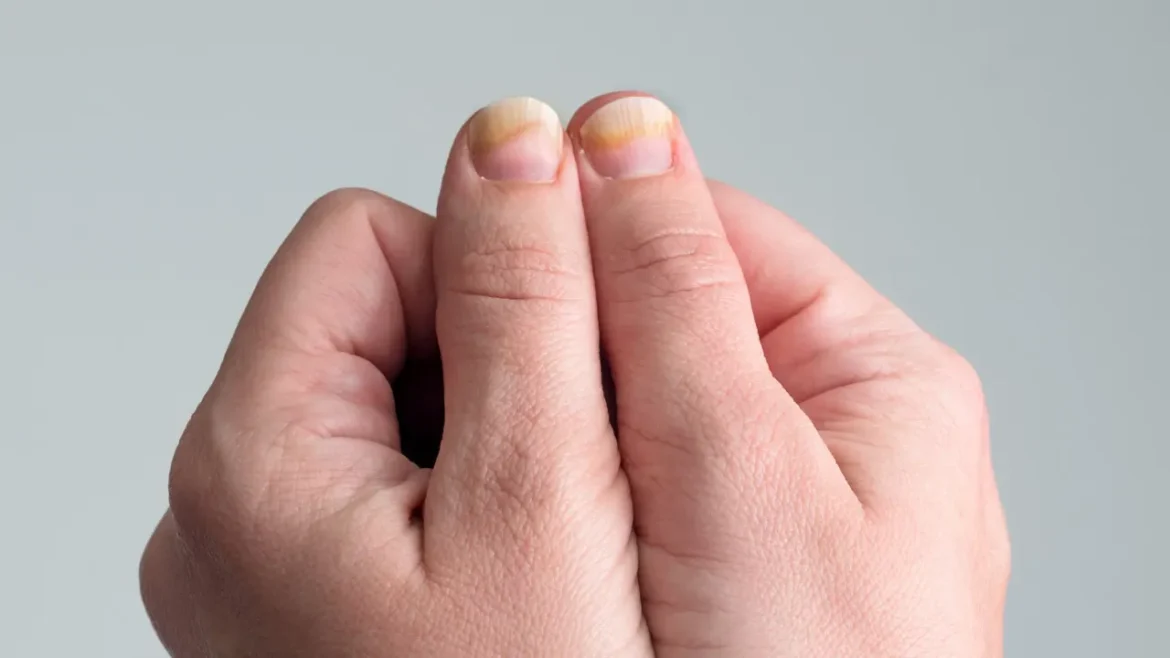Description
Onychomycosis, often known as nail fungus, is a common fungus illness that impacts the nails on the feet and hands. That is indicated by the thickness, distortion, and discoloration of the nails. The majority of dermatophytes, a class of fungi that prefers warm, damp settings, are responsible for nail fungus. Among the most typical fungi that cause nail infections are Candida species, Trichophyton rubrum, and Trichophyton mentagrophytes. Under the nail, nail fungus often starts as a tiny white or yellow patch that slowly grows and turns the nail brittle, thick, and discolored. Untreated, it may bring about pain, discomfort, and trouble going about one’s everyday activities.
You May Also Like:
IS DR MERCOLA KRILL OIL TRULY A GREAT SOURCE OF DAILY OMEGA-3S?
NATUREMYST KRILL OIL: A REVIEW OF THE FACTS ABOUT THIS LEADING OMEGA-3 PRODUCT
Nail fungus: Description, Causes, And Treatment Protocol is an original (HealthXWire) article.
Possible Causes
Nail fungus can occur due to numerous circumstances, such as the following.
Weakened Immune System
People with immune systems that are already impaired, including those who have HIV/AIDS, diabetes, or autoimmune diseases, are more prone to developing nail fungus.
Humid and Warm Surroundings
It is optimal for fungi to thrive when people are exposed to warm, moist environments for an extended period of time, like wet socks or sweaty shoes.
Poor Foot Hygiene
Nail fungus is more likely to develop when good foot care is not practiced, including poor nail clipping and failing to maintain feet dry and clean.
Nail Injury
The nail bed may become infected by fungi when it suffers injuries like stubbing or repeated pressure.

Exacerbating and Mitigating Factors
Different aggravating and reducing factors that affect the development and treatment of nail fungus comprise the following.
Exacerbating Factors
Hot and humid situations
Fungi prefer warm, moist environments, so activities such as wearing sweat-stained shoes or wet socks can serve as a breeding ground for the disease.
Weakened immune system
Due to their poor resistance to infection, people with weaker immune systems, like those suffering from HIV/AIDS, diabetes, or autoimmune diseases, are more likely to develop nail fungus.
Trauma to nails
Cuts, scratches, or repeated pressure on the nails can injure them and leave spaces where fungi can enter to spread infection.
Poor nail hygiene
Lack of proper nail care, like neglecting to maintain nails dry and clean or handling shared contaminated instruments, may raise the possibility of nail fungus.
Mitigating Factors
Antifungal powders and sprays
By applying antifungal powders or sprays to socks and shoes, one can make it difficult for fungi to develop.
Breathable footwear
Moisture can be reduced and the possibility of fungus growth minimized by wearing breathable, natural-material shoes.
Avoiding nail trauma
Nail fungus may be prevented by shielding nails from damage by preventing repetitive pressure.
Healthy foot and nail care
Nail fungus may be avoided by keeping feet dry and clean, cutting nails frequently, and using clean equipment.


Standard Treatment Protocol
Antifungal medicines taken orally and topically are frequently used in the conventional treatment plan for nail fungus. The choice of therapy is determined by the seriousness of an infection, the total number of afflicted nails, and personal characteristics including general health and drug interactions. It is crucial to remember that therapy can take a while, frequently taking several months or weeks to resolve the illness completely. The common forms of treatment are outlined below.
Oral Antifungal Medications
Oral antifungal drugs may be administered for nail fungus that is severe or extensive. Itraconazole and terbinafine are two drugs that are administered the most frequently, though many medical providers are wary when prescribing these medications due to the possibility of exacerbating existing health issues. The systemic action of these drugs eliminates the fungus. Depending on the drug and the extent of the illness, the course of treatment may last a few weeks to several months. Owing to possible side effects, periodic evaluation of liver function might be required while on oral antifungal treatment.
Topical Antifungal Medications
For mild to severe episodes of nail fungus, over-the-counter (OTC) and antifungal ointments, creams, and nail lacquers can be readily accessible. These topically applied medications frequently include antifungal substances like miconazole, clotrimazole, or amorolfine. As directed by the product, these are used directly on one’s skin around the damaged nails. When frequently applied and in the early phases of infection, topical therapies are most efficacious.


Treatment Options
The efficacy of conventional treatments may be increased by taking into account a number of adjunct treatment choices besides regular treatment procedures. The following are potential choices.
Over-the-counter (OTC) Formulations
OTC antifungal ointments and creams can be utilized for adjunct therapy along with prescription drugs, in conjunction with being utilized as the main course of treatment. Before beginning the prescribed treatment, treating the afflicted nails with an over-the-counter antifungal lotion or ointment can aid the situation altogether.
Nutritional Supplements
Nutritional supplements can help maintain good nail health in general, but it is essential to remember that their usefulness in managing nail fungus in particular has not been extensively investigated. Nevertheless, some dietary supplements may be advantageous for the immune system and nail health, which could assist with curing nail fungus indirectly. It is advised to speak with a healthcare expert before beginning any nutritional supplement to determine the proper dosage and make sure there are no drug interactions. The nutritional supplements listed below have been recommended for promoting the health of nails.
Biotin
The metabolism of fats and proteins involves biotin, commonly referred to as vitamin B7. It was previously proposed that nails could be made stronger and thicker. Despite the paucity of research, particularly on nail fungus, certain studies imply that biotin supplements may benefit nail health in general.
Vitamin C
A crucial component that supports immune system health and functions as an antioxidant, is vitamin C. The immune system’s capacity to combat fungus may be supported by appropriate vitamin C levels. Although there is not any concrete proof that it works for curing nail fungus, it contributes to immune system health in general.
Vitamin E
Antioxidant vitamin E assists in preventing cell deterioration. It has been recommended to increase nail strength and encourage nail health. Maintaining enough levels of vitamin E may help to promote general nail health, despite the paucity of studies on its direct impact on nail fungus.
Probiotics
Probiotics contain helpful bacteria that help maintain balanced gut flora. By strengthening general immune function, they might contribute indirectly to better nail health. According to some research, taking probiotic supplements may help the body fight off fungus more effectively.
Natural and Herbal Remedies
However, it is essential to realize that there is scant scientific data to support the beneficial effects of natural and herbal treatments for nail fungus. These treatments ought to be taken in combination with established treatment regimens and with the advice of a healthcare practitioner. They might possess antifungal qualities that can aid in preventing fungal growth. The following list of suggested natural and herbal treatments.
Garlic
Garlic includes the potential to be antifungal and possesses antimicrobial qualities. Garlic cloves that have been crushed may be immediately applied to the troubled nails or infused into a foot bath. Its effectiveness in curing nail fungus, nevertheless, is only partially supported by scientific research.
Tea Tree Oil
The Melaleuca alternifolia plant, from which tea tree oil originates, naturally combats fungi. A topical remedy for nail fungus is currently proposed using it. A cotton swab might be used to apply dilute tea tree oil straight to the afflicted nails. Before applying tea tree oil, it is advised to conduct a patch test because it can in certain individuals induce skin irritation.
Vinegar Soaks
Nail fungus can be treated naturally by soaking the afflicted nails in a mixture containing diluted vinegar, usually apple cider vinegar. Vinegar’s pH level may aid in preventing the growth of fungi. To treat the afflicted nails, soak them in a 1:1 solution of water and vinegar for 15 to 20 minutes each day. Following this, it is essential to completely dry the nails for avoiding moisture buildup.
Neem
Neem, which comes from the neem trees and contains antifungal characteristics, has been utilized traditionally for a number of skin disorders. Applying topically on the infected nails neem leaf extract is an option. Their usefulness for nail fungus in particular will require more investigation, though.
Essential Oils
Several essential oils are being proposed for their possible antifungal qualities, including oregano, thyme, and lavender oils. They can be diluted with carrier oils, like olive oil or coconut oil, and then applied directly to the damaged nails. Nevertheless, there is little scientific proof to back up their effectiveness in treating nail fungus.
However, natural and herbal medicines may differ in effectiveness and can have negative effects on certain people, therefore it is vital to practice caution when taking them. Prior to utilizing any of these cures, it is best to speak with a healthcare provider, particularly when one has any existing medical conditions or is already on any drugs. Furthermore, these treatments must not be utilized as stand-alone treatments for nail fungus; rather, they should be combined with established therapy procedures.


Conclusion
Though it can persist stubbornly, there is optimism for individuals searching for relief from the symptoms of nail fungus. In addition to conventional treatments like antifungal medications, exploring natural remedies with demonstrated potential for easing nail fungus symptoms is worthwhile. Nail fungus is common and nothing to be ashamed of. Though it is contagious, you can reduce exposure to others by regularly cleaning surfaces the infected nails may have touched and never sharing grooming tools. Regularly cleaning the infected area is also the simplest way to prevent it from spreading to other areas of the body.
Additional resources for further reference
https://www.mayoclinic.org/diseases-conditions/nail-fungus/symptoms-causes/syc-20353294
https://www.aad.org/public/diseases/a-z/nail-fungus-treatment
https://www.medicalnewstoday.com/articles/151952
https://www.cdc.gov/fungal/nail-infections.html
Important Note: The information contained in this article is for general informational purposes only, and should not be construed as health or medical advice, nor is it intended to diagnose, prevent, treat, or cure any disease or health condition. Before embarking on any diet, fitness regimen, or program of nutritional supplementation, it is advisable to consult your healthcare professional in order to determine its safety and probable efficacy in terms of your individual state of health.
Regarding Nutritional Supplements Or Other Non-Prescription Health Products: If any nutritional supplements or other non-prescription health products are mentioned in the foregoing article, any claims or statements made about them have not been evaluated by the U.S. Food and Drug Administration, and such nutritional supplements or other health products are not intended to diagnose, treat, cure, or prevent any disease.
Table of Contents


